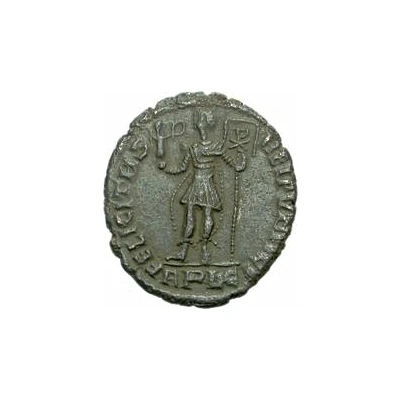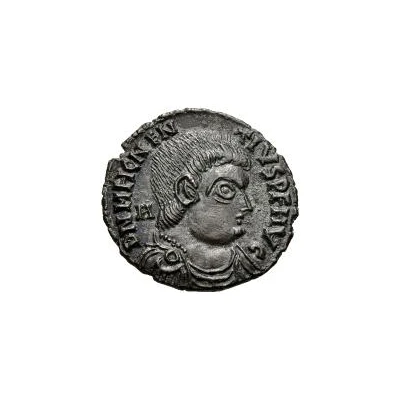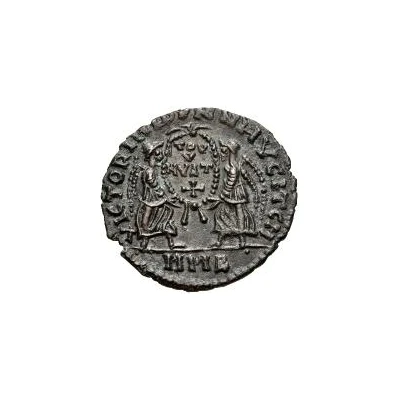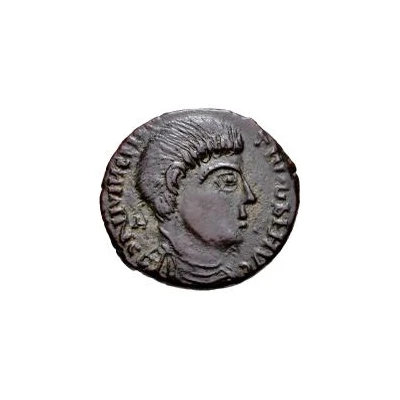
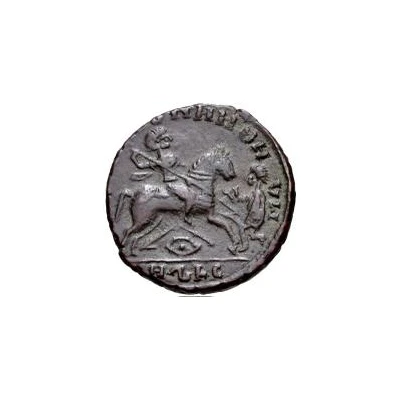

© Classical Numismatic Group, Inc.
Æ In the name of Magnentius
| Bronze | 4.36 g | 20 mm |
| Issuer | Uncertain Germanic tribes |
|---|---|
| Type | Standard circulation coin |
| Years | 350-425 |
| Currency | Solidus (circa 301-750) |
| Composition | Bronze |
| Weight | 4.36 g |
| Diameter | 20 mm |
| Shape | Round (irregular) |
| Technique | Hammered |
| Demonetized | Yes |
| Updated | 2024-10-04 |
| Numista | N#153985 |
|---|---|
| Rarity index | 100% |
Reverse
Soldier on horse spearing person, all surrounded by legend.
Script: Latin
Lettering:
[...]OHHHOH - VLI
HSTC
Translation:
[Gloria Romanorum]
[Glory to Rome]
Edge
Plain
Comment
Various weights have been recorded of this type from 3.10 grams to 4.36 grams; various diameters of this type have been recorded of this type from 18 millimetres to 22 millimetres.This coin is said to be struck from the mid-4th to early-5th centuries. With the prototypes for these coins struck in Lugdunum/Lyon mint or Treveri/Trier mint, and with those two types both being first struck in 350, that is the most-likely beginning date for this entire type of AE struck by an Uncertain Germanic Tribe.
The denominations of bronze coins that are unknown to numismatists are referred to as Æ (AE), followed by the coin's diameter. The Æ part simply means the coin is made of a base alloy, and because the diameter of these coins is never exactly as intended, different numbers can appear after the Æ for the same type.
The exact lettering of the surrounding legend may vary.
Interesting fact
One interesting fact about this coin is that it features an image of Magnentius, a Roman usurper who ruled the Western Roman Empire from 350 to 353 AD. Despite being a usurper, Magnentius was able to issue coins in his name, which suggests that he had some level of legitimacy or recognition among the Germanic tribes. This coin, in particular, was likely minted during a time of political instability in the Roman Empire, and its existence provides a glimpse into the complex power dynamics of the period.

